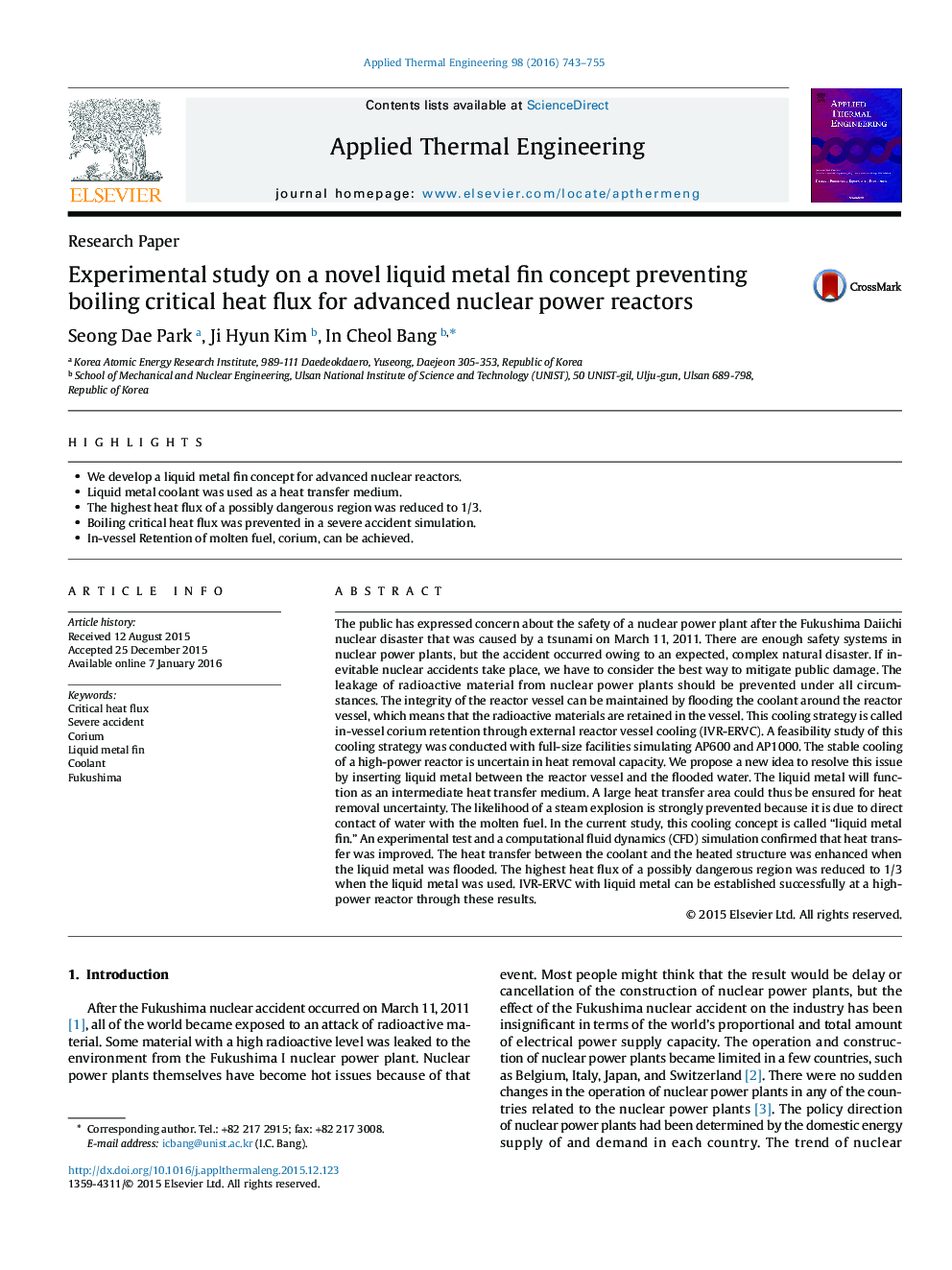| کد مقاله | کد نشریه | سال انتشار | مقاله انگلیسی | نسخه تمام متن |
|---|---|---|---|---|
| 7048622 | 1457130 | 2016 | 13 صفحه PDF | دانلود رایگان |
عنوان انگلیسی مقاله ISI
Experimental study on a novel liquid metal fin concept preventing boiling critical heat flux for advanced nuclear power reactors
ترجمه فارسی عنوان
بررسی تجربی بر روی یک مفهوم جدید فلزی مایع فلزی جلوگیری از جوش شار گرمای گرمایشی برای راکتورهای انرژی پیشرفته هسته ای
دانلود مقاله + سفارش ترجمه
دانلود مقاله ISI انگلیسی
رایگان برای ایرانیان
کلمات کلیدی
شار گرمای انتقالی، تصادف شدید، کوریوم، فلزی فلزی مایع، خنک کننده فوکوشیما،
موضوعات مرتبط
مهندسی و علوم پایه
مهندسی شیمی
جریان سیال و فرایندهای انتقال
چکیده انگلیسی
The public has expressed concern about the safety of a nuclear power plant after the Fukushima Daiichi nuclear disaster that was caused by a tsunami on March 11, 2011. There are enough safety systems in nuclear power plants, but the accident occurred owing to an expected, complex natural disaster. If inevitable nuclear accidents take place, we have to consider the best way to mitigate public damage. The leakage of radioactive material from nuclear power plants should be prevented under all circumstances. The integrity of the reactor vessel can be maintained by flooding the coolant around the reactor vessel, which means that the radioactive materials are retained in the vessel. This cooling strategy is called in-vessel corium retention through external reactor vessel cooling (IVR-ERVC). A feasibility study of this cooling strategy was conducted with full-size facilities simulating AP600 and AP1000. The stable cooling of a high-power reactor is uncertain in heat removal capacity. We propose a new idea to resolve this issue by inserting liquid metal between the reactor vessel and the flooded water. The liquid metal will function as an intermediate heat transfer medium. A large heat transfer area could thus be ensured for heat removal uncertainty. The likelihood of a steam explosion is strongly prevented because it is due to direct contact of water with the molten fuel. In the current study, this cooling concept is called “liquid metal fin.” An experimental test and a computational fluid dynamics (CFD) simulation confirmed that heat transfer was improved. The heat transfer between the coolant and the heated structure was enhanced when the liquid metal was flooded. The highest heat flux of a possibly dangerous region was reduced to 1/3 when the liquid metal was used. IVR-ERVC with liquid metal can be established successfully at a high-power reactor through these results.
ناشر
Database: Elsevier - ScienceDirect (ساینس دایرکت)
Journal: Applied Thermal Engineering - Volume 98, 5 April 2016, Pages 743-755
Journal: Applied Thermal Engineering - Volume 98, 5 April 2016, Pages 743-755
نویسندگان
Seong Dae Park, Ji Hyun Kim, In Cheol Bang,
